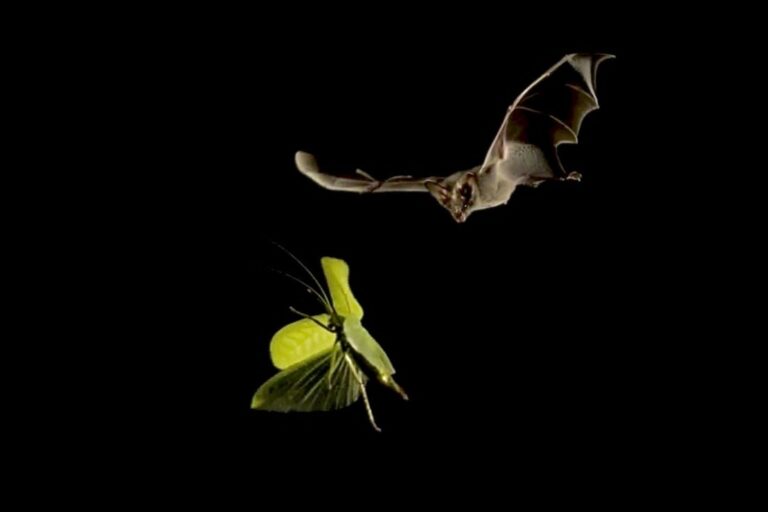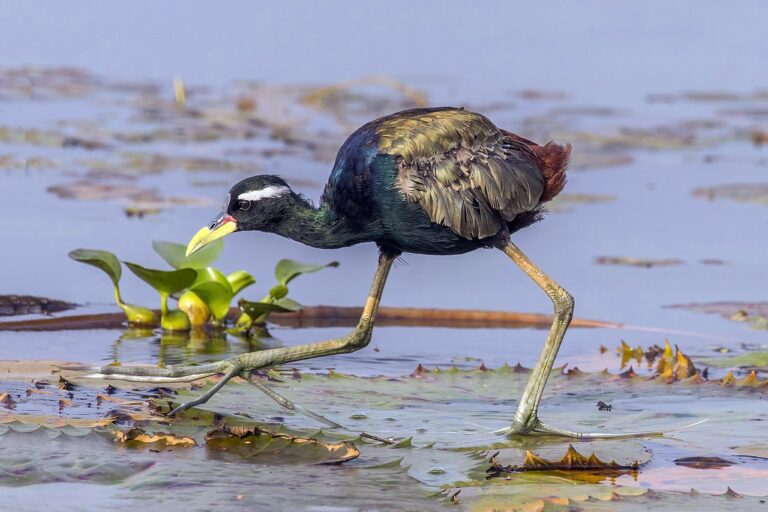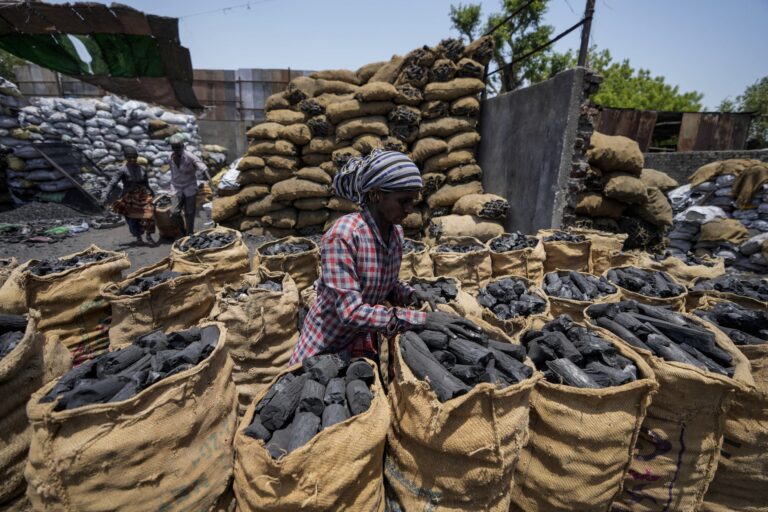- Medicinal plants were listed as a provisioning ecosystem service in the United Nations Millennium Ecosystem Assessment of 2005. India has had an ancient history of both codified and non-codified healing systems that use medicinal plants across the subcontinent.
- Medicinal plants play a crucial role in drug discovery, with at least 25 percent of modern medicine being derived either directly or indirectly from them.
- Challenges to conserving medicinal plants include overharvesting, biodiversity loss, eroding traditional knowledge and climate change.
- Under the principle of access-and-benefit sharing, as listed by the Convention of Biological Diversity and India’s Biological Diversity Act, local communities should benefit from sharing their plant resources and traditional knowledge with others.
Five trillion US dollars.
That’s how much the overall international trade in medicinal plants and their products alone is expected to amount to by the year 2050. Estimates, as far as medicinal plants go, are many. According to one by the World Health Organisation (WHO), 70 to 95 per cent of people in many developing countries rely largely on traditional medicine – mostly herbal remedies – for primary healthcare. In 2006, researchers estimated that more than 70,000 plant species were being used in medicines worldwide.
However, despite their growing economic importance, medicinal plants – as an ecosystem service crucial to human health, livelihood and knowledge – are not popular in discourse. And with global biodiversity loss and erosion of traditional knowledge systems, threats to medicinal plants and their associated knowledge are many. Increased commercialisation of medicinal plant resources also brings in issues of access to this wealth and equitable sharing of benefits.
According to the Botanical Survey of India, India is home to more than 8,000 species of medicinal plants. The country has a rich history of traditional healing systems, many of which list the use of these plants. For instance, the oldest printed book on Indian medicinal plants, Hortus Malabaricus (a 12-volume treatise on the medicinal plants of the Malabar region along India’s west coast), dates back to 1678.
Even in current times, research on medicinal plants and their use across India documents how local communities, especially indigenous ones, still use them in their daily lives. In the Andaman and Nicobar islands, four indigenous communities including the Jarawas use 39 endemic medicinal plants for their health needs; 17 of these are used to cure multiple ailments, finds a 2018 study. Of the 83 plant species used by the semi-pastoral Gujjar community in Himachal Pradesh, 32 are used as medicine alone.
Indeed, many communities – especially indigenous ones – still rely almost entirely on traditional systems of medicine for their health needs, said N. Anil Kumar, senior director and head of the M.S. Swaminathan Research Foundation’s Community Agrobiodiversity Centre at Kerala’s Wayanad. Apart from medicinal plants being vital to their livelihoods (such as the medicinal non-timber forest produce that indigenous communities collect and sell for a living), the plants are also a crucial cultural resource, he added.
“These include non-codified systems such as oral histories in which knowledge is transferred by word of mouth from generation to generation,” said Kumar.
Such knowledge often varies across communities; sometimes, even across genders. Kumar recounts how a woman from a Kurichiya tribe in Wayanad knew of a small, pretty-flowered herb as a remedy for skin rashes for babies, while a Paniya man claimed they did not use the herb for any ailment at all.
Plant medicine, a ‘pseudoscience’?
However, many do question the scientific basis of using direct plant derivatives in medicine. And not without reason: medicinal concoctions are notoriously difficult to test using methods laid down by science. Several plant compounds are often used in a single preparation; purification and other means of evaluating these concoctions result in a loss or change of chemicals. Toxicity is also an issue, and side effects – ranging from nausea to kidney failure – are a possibility. Spurious substances, adulterants and substitutes have been reported from many herbal medicines. Moreover, science’s golden rule of replicability is not testable since preparation methods are often heavily-guarded secrets.
What cannot be denied though is the role of medicinal plants in drug discovery. According to the WHO, at least 25 percent of all modern medicines are derived, either directly or indirectly, from medicinal plants.

Several drugs – including those used to treat cancers – are derived from plants. And science is beginning to reveal that some suspected medicinal benefits may indeed be true, as it has in the case of the arogyapacha herb, Trichopus zeylanicus. Several studies and a detailed genomic analysis later, we could be closer to understanding why the rare ‘miracle herb’ has come to be used by the Kani community of southern Kerala traditionally as an instant energy-releaser.
Challenges: Biodiversity loss, eroding traditional knowledge
But such traditional knowledge of communities is fast eroding, said Kumar; there is no transfer of knowledge across generations, and younger generations are no longer interested in it, he added.
Almost simultaneously, human-caused biodiversity losses are affecting medicinal plants and associated traditional knowledge too. Degradation of forests and loss of species make some plant species unavailable for the use of local communities; as a result, traditional methods of use including sustainable methods of collection are being lost. However, some efforts – including in-situ and ex-situ techniques – are underway to conserve plant resources and associated traditional knowledge.
The National Medicinal Plant Board lists 72 ‘medicinal plants conservation and development areas’ covering 10,935 hectares that have been set up across 13 states to conserve medicinal plants in their natural habitats. Under the Department of Biotechnology, four ‘field gene banks’ of threatened plants (including those known for their medicinal uses) are also being maintained across India.
Additional research on such in vitro methods including the production of secondary metabolites would be crucial for the “effective and sustainable use” of these plants, comment scientists in a review of in vitro technology for the conservation of medicinal plants in the Western Ghats. At MSSRF’s Wayanad centre, ethnotaxonomy – the traditional ways in which communities identify and classify plants – is a study focus. Their six-hectare medicinal plant park developed with the state government in Odisha’s Jeypore functions as a plant genetic repository and field site for nine tribal communities to cultivate and harvest the medicinal plants they have relied on for centuries.
Climate change and overharvesting
A month-old ‘warning’ paper endorsed by more than 20 scientists worldwide suggests that climate change is likely to affect peoples’ access to medicinal plants. Small taxa such as herbaceous plants, especially in temperate areas, would be some of the first to be affected by climate change, points out K. Haridasan, retired joint director of Foundation for Revitalization of Local Health Traditions (now The University of Trans-Disciplinary Health Sciences and Technology), who has extensively studied medicinal plants and floristics in the western Himalayas and north-east India.
A recent study does hint at this. In answer to questionnaire surveys, traditional healers in Uttarakhand claimed that many of the species they use now flower and fruit earlier than before, which affects their traditional times of plant harvests. Some species are now found at higher elevations; herbs that were available just a day’s walk away from their homes are now more difficult to procure, they add.

Overharvesting, however, is a more immediate concern. Medicinal plants are one of the most “famous” examples of overharvesting by collection, declares a summary by the Harvard Medical School. While cultivating medicinal plants could reduce pressures on wild plants, it comes with many challenges. Cultivation may not be economically viable for some species; for others, growth periods can run into several years, according to a 2002 Food and Agriculture report. Cultivated plants are also often considered inferior; so most medicinal plants will continue to be harvested from the wild, the report emphasises.
Poverty is an issue too, said R.K. Maikhuri, scientist-in-charge at the G.B. Pant National Institute of Himalayan Environment and Sustainable Development in Uttarakhand’s Garhwal, whose team has studied plant resource extraction in the area.
“Many people really need the money,” he said. “However, we did find that villagers followed sustainable patterns of harvest when we recommended they harvest only 60 percent of Rhododendron flowers from each tree. So awareness is key.”
Sharing wealth and knowledge
Sharing such sustainably harvested biological diversity (including medicinal plants) in return for benefits to local communities – called the Access and Benefit Sharing (ABS) model – is what the Convention on Biological Diversity (CBD), a 1993 multilateral treaty that India is also a signatory to, focuses on. With the Biological Diversity Act of 2002, India became the first country to take the lead in passing a law to uphold the CBD nationally.
The Biological Diversity Act appointed the National Biodiversity Authority (NBA) to implement the conservation of biodiversity, its sustainable use and equitable sharing of benefits across all states through state biodiversity boards and at the grassroots (at the levels of panchayats) through biodiversity management committees. Currently, there are 29 state biodiversity boards and more than 155,868 biodiversity management committees. On paper, the latter is responsible for the preparation of the people’s biodiversity register (PBR) at the local level which documents biodiversity in their area and associated traditional knowledge. The state of Kerala, for instance, has prepared registers for all its 1,034 local bodies – 941 grama panchayats, 87 municipalities and 6 corporations.
So more than 15 years after the Act, how effective have these international and national policies been? How have communities across the country benefitted? The second part of this story will explore these in details, and trace cases of access-and-benefit sharing in India.
CITATIONS:
Maikhuri et al 2017. Assessment of Climate Change Impacts and its Implications on Medicinal Plants-Based Traditional Healthcare System in Central Himalaya, India. Iranian Journal of Science and Technology, Transactions A: Science 42: 1827-1835.
IMPPAT: A curated database of Indian Medicinal Plants, Phytochemistry And Therapeutics. 2018. Karthikeyan Mohanraj, Bagavathy Shanmugam Karthikeyan, R.P. Vivek-Ananth, R.P. Bharath Chand, S.R. Aparna, P. Mangalapandi and Areejit Samal. Scientific Reports 8:4329 (2018).
Wendy L. Applequist, Josef A. Brinckmann, Anthony B. Cunningham, Robbie E. Hart, Michael Heinrich, David R. Katerere, Tinde van Andel. 2020. Scientistsʼ Warning on Climate Change and Medicinal Plants. Planta Medica 86: 10–18.
Meri Robinson and Zhang. 2011. The World Medicines Situation 2011 Traditional Medicines: Global situation, issues and challenges. World Health Organisation.
WHO Traditional medicine strategy 2002–2005. Geneva, World Health Organization, 2002 (WHO/EDM/TRM/2002.1). Available at: http://apps.who.int/medicinedocs/en/d/Js2297e/
Palhares et al 2015. Medicinal Plants Recommended by the World Health Organization: DNA Barcode Identification Associated with Chemical Analyses Guarantees Their Quality. PloS One 10(5): e0127866.
Schippmann U, Leaman D, Cunningham AB (2006). A comparison of cultivation and wild collection of medicinal and aromatic plants under sustainability aspects. In: Bogers, RJ, Craker, LE, Lange D (Eds): Medicinal and aromatic plants, pp. 75-95, Springer, Netherlands.
Biodiversity: Its Importance to Human Health. 2002. Interim Executive Summary. A Project of the Center for Health and the Global Environment Harvard Medical School under the auspices of theWorld Health Organization, the United Nations Development Programme, and the United Nations Environment Programme. Ed. Eric Chivian M.D.
Alves, R.R., Rosa, I.M. Biodiversity, traditional medicine and public health: where do they meet? 2007. J Ethnobiology Ethnomedicine 3, 14. https://doi.org/10.1186/1746-4269-3-14
Cycas beddomei: A jewel of Seshachalam Hills. ENVIS Newsletter on Medicinal Plants (5): 1,2,3,4.
Phondani et al 2016. Promoting medicinal plants cultivation as a tool for biodiversity conservation and livelihood enhancement in Indian Himalaya. Journal of Asia-Pacific Biodiversity 9 (1): 39-46.
Guidelines on good field collection practices for Indian medicinal plants. 2009. National Medicinal Plants Board, Department of AYUSH, Ministry of Health and Family Welfare, Government of India.
FAO. 2002. Schippmann et al. Biodiversity and the Ecosystem Approach in Agriculture, Forestry and Fisheries. Satellite event on the occasion of the Ninth Regular Session of the Commission on Genetic Resources for Food and Agriculture. Rome, 12-13 October 2002. Inter-Departmental Working Group on Biological Diversity for Food and Agriculture. Rome.
Ekor, 2013. The growing use of herbal medicines: issues relating to adverse reactions and challenges in monitoring safety. Frontiers in Pharmacology 4:177.
B.V. Chellappan et al 2019. High Quality Draft Genome of Arogyapacha (Trichopus zeylanicus), an Important Medicinal Plant Endemic to Western Ghats of India. Genes Genomes Genetics 9:2395-2404.
Biological Diversity Act. 2002. Government of India
Sharma et al 2018. Medicinal Plants Used by Tribes of Andaman and Nicobar Islands: A Conservation Appraisal. Indian J. Plant Genet. Resour. 31(2): 125-133.
Rana et al 2019. Ethnobotanical knowledge among the semi-pastoral Gujjar tribe in the high altitude (Adhwari’s) of Churah subdivision, district Chamba, Western Himalaya. Journal of Ethnobiology and Ethnomedicine. 15:10.
Krishnan et al 2011. Conservation of medicinal plants of Western Ghats, India and its sustainable utilization through in vitro technology. In Vitro Cell.Dev.Biol.—Plant 47:110–122.
Banner image: The giant milkweed Calotropis Gigantia is used to treat numerous ailments ranging from skin infections to fevers. Photo by Aathira Perinchery.













